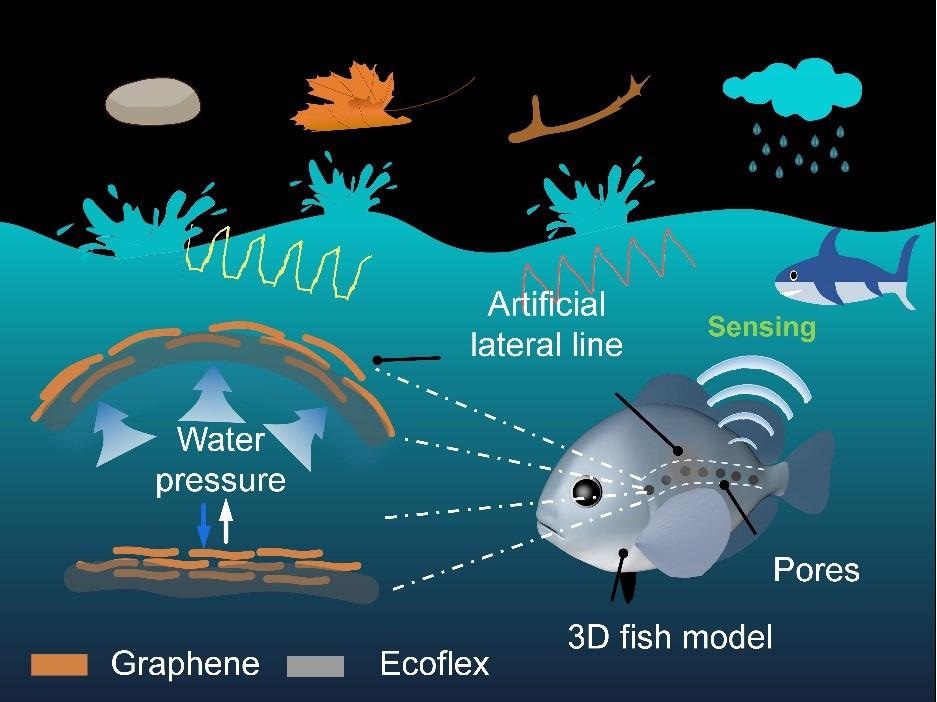The Ningbo Institute of Materials Technology and Engineering (NIMTE) has developed a lateral-line-like underwater mechanical sensor (LUMS) that can actively detect water depth across a wide range of 0.3-1.8 m and sensitively collect mechanical stimuli from both land and water. The research was published in the Nano-Micro Letters.
 The lateral-line-inspired sensor for underwater detection and vibration perception. Image Credit: The Ningbo Institute of Materials Technology and Engineering.
The lateral-line-inspired sensor for underwater detection and vibration perception. Image Credit: The Ningbo Institute of Materials Technology and Engineering.
Flexible sensors with capabilities such as sensing underwater depth and perceiving liquid level variations have been intensively investigated as a result of the development of diverse underwater activities such as water environment monitoring and underwater biological tracking. Designing flexible, undetectable and reliable underwater sensors in a unified system for broad water level sensing and sensitive vibrations observation remains a difficult task.
Fish have specific skin sensors, known as the lateral line, which are found on both sides of the fish’s belly and head and can observe changes in water flow rate and pressure.
The researchers at NIMTE of the Chinese Academy of Sciences (CAS), headed by Prof. Tao Chen, created an undersea sensor based on the graphene/Ecoflex Janus film, which has been formed at the water/air interface, motivated by the lateral line’s structure and functions.
The self-Janus film deforms when the LUMS is submerged due to the combined force of the hydraulic pressure and the air pressure in the air chamber. This deformation generates a change in the sensor’s resistance, which causes a real-time electrical signal change to provide stable underwater depth sensing.
The range of detecting depth may be changed by modifying the size of the graphene/Ecoflex Janus film on LUMS, enabling a broad underwater depth range of 0.3-1.8 m, thanks to the superior adaptable and morphable properties of the graphene-based layer.
In addition to small underwater vibrations (for example, wind blowing, pouring), the created multifunctional LUMS can detect mechanical stimulation from land sensitively in real-time, such as banging, stomping, and so on.
This study of a lateral-line-inspired undersea sensor has some implications for future research into underwater detection and vibration perception.
The Natural Science Foundation of China, the Sino-German Mobility Program, and the CAS’ Key Research Program of Frontier Sciences contributed to this research.
Journal Reference:
Wang, Q., et al. (2022) Bioinspired Adaptive, Elastic, and Conductive Graphene Structured Thin-Films Achieving High-Efficiency Underwater Detection and Vibration Perception. Nano-Micro Letters. doi.org/10.1007/s40820-022-00799-4.
Source: https://english.cas.cn/